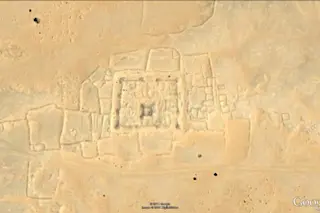New satellite images have revealed more than a hundred ancient fortified settlements still standing in the Sahara. The settlements, located in what today is southern Libya, were built by the Garamantes, a people who ruled much of the area for nearly a thousand years until their empire fragmented around 700 AD. Information about the Garamantes is relatively scarce: Other than the accounts of classical historians (who aren't known for careful accuracy) and excavations of the Garamantian capital city in the 1960s, archaeologists haven't had a lot to go on. During the decades-long reign of Muammar Gadhafi, antiquities and archaeology weren't exactly a national priority; the fortresses were largely ignored. As David Mattingly, the British archaeologist who led the project, said to OurAmazingPlanet of the discoveries: "It is like someone coming to England and suddenly discovering all the medieval castles." Through previous archaeological excavations---including a dig earlier this year that was ...
Satellite Photos Show Ancient Saharan Fortresses of a Lost Empire
Discover ancient fortified settlements of the Garamantes civilization in the Sahara, revealing their advanced society.
More on Discover
Stay Curious
SubscribeTo The Magazine
Save up to 40% off the cover price when you subscribe to Discover magazine.
Subscribe













